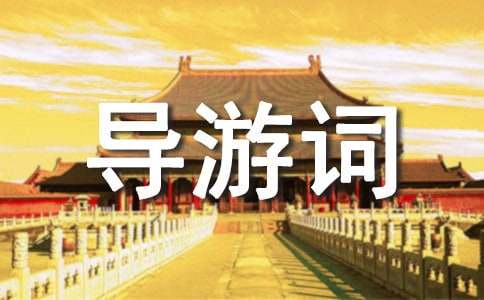西安大清真寺的英文導游詞
The Great Mosque at Huajue Lane

The Mosque is a major spot for religious activities of over 60。000 Moslems in Xi'an, likewise, an important cultural relic protected by the Provincial People's Government。 Unlike the Arabic mosques, with splendid domes, the minarets reaching into the clouds, the colorful engraved sketches with dazzling patterns, the Mosque here in Xi'an possesses much Chinese traditional touch in both its design and artistic outlook; besides the style peculiar to Islamic mosques, this Mosque also holds characteristics of Chinese pavilions with painted beams and engraved ridgepoles。
However, any further discussion about the Mosque will be futile unless anything of the introduction of Islam into China is brought up。
Islam as a religious order was founded in the early period of the 7th century A。D。 and was introduced to China in the mid-600s。 At that time, Arabian merchants and travelers came to the northwest of China by way of Persia and Afghanistan and thus established diplomatic, trade, and military contacts with China。 In the meantime, another route saw a batch of sea voyagers through Bangladesh Bay and the Malacca Strait to China's Guangzhou, Quanzhou, Huangzhou, Yangzhou and other cities where many of them settled down and married the local women who later gave birth to babies who then became Moslems。
However, massive immigration of the Moslems to China did not take place until as late as the early period of the 13th century, when Genghis Khan, as a result of his expedition against the west, had conquered vast expanses of land stretching from Central Asia to Eastern Europe, including the north of Iran。 Many of the Moslems in the conquered areas were thus forced to enlist and later settled in China。
Among the enlisted many were soldiers, and some were smiths and officials who were called the Hui people in the history books on the Yuan dynasty。 The Hui people later followed Kublai Khan down to the south, helping him unifying China and then establish the Yuan dynasty。 In the wake of the conquest, Islam spread all over China and mosques began to appear everywhere。 In the Yuan dynasty, many Moslems held positions both in the military and civilian organs of the country。 And a lot of the Moslems took part in Zhu Yuanzhang's uprising in the early 14th century and made great contributions to the founding of the Ming Dynasty。 Therefore, all the emperors of the Dynasty issued mandates to protect Islam, and to set up mosques in praise of the Moslems for their feats。 In the early 16th century, Islam predominated Qinghai on the minority nationalities including the Huis, the Uygurs, the Kazaks, the Kirgizes, the Tajiks, the Tartars, the Ozbeks, the Dong Xiangs, the Salars and the Bonans。 The Moslems in Xi'an are mainly the Huis, being a small portion out of the ten million in China。
The Mosque at Hua Jue Lane is the largest in Xi'an, and at the same time, it is also one of the earliest built on a comparatively large scale, and well preserved mosques in China。
【西安大清真寺的英文導游詞】相關文章:
西安古城的導游詞01-23
西安華清池導游詞10-17
西安的鼓樓導游詞-陜西導游詞01-28
西安的導游詞(15篇)01-14
西安景點導游詞-陜西導游詞01-05
西安主要景點導游詞01-21
西安驪山導游詞01-06
西安導游詞(匯編15篇)01-15
西安導游詞精選15篇01-10
西安景點導游詞14篇01-05